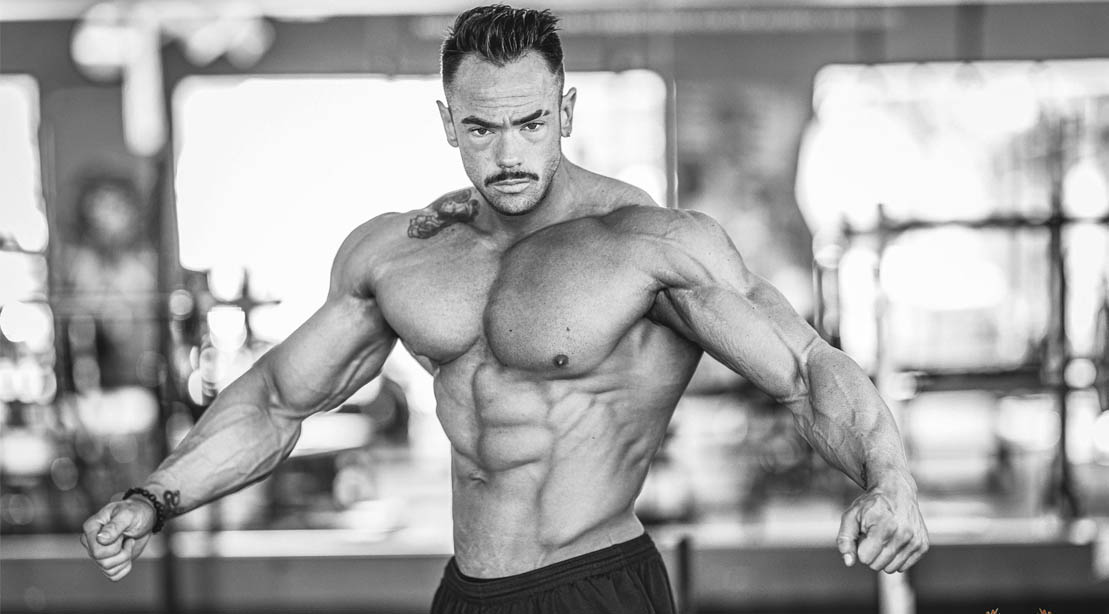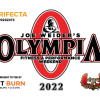How To Achieve the Bodybuilder Look
The “bodybuilder look” has come to be identified as a very specific thing. Comments are often made about the physiques of boxers, wrestlers, sprinters, and all sorts of other athletes to the effect of “he looks like a bodybuilder.” What does this mean?
The method that creates this look was not invented by scientists or medical experts. It wasn’t developed by exercise physiologists. It has evolved over decades through the trial and efforts of the bodybuilders themselves.
If you look at old photos from the history of bodybuilding you can see this evolution taking place. In a magazine from the 1950s, aside from a few legends like Steve Reeves, Bill Pearl or Reg Park, most of the physiques you see illustrated simply don’t look anything like contemporary bodybuilders.
The Physical Culture competitions of the 1920s and 1930s, in which athletes of all sorts took part, came to be dominated by the weightlifters whose training produced the most dramatic changes in their physiques. These early bodybuilders found that developing a program of weight “training” as opposed to weightlifting created a much more aesthetic and artistic look to the body. So instead of training the entire body in one workout several times a week like weightlifters, these bodybuilders began doing split-system programs, hitting only certain body parts in any given training session.
Nonetheless, if you look at today’s top bodybuilders, they are bigger, harder, and more defined than any time before in history, and while their training programs are not identical there is a remarkable similarity. They almost all do variations of programs that seem to tap into the fundamental nature of the body and its muscles and produce the most dramatic results. They have discovered in what ways you have to train if you want to look like a bodybuilder.
Almost anyone who reads physique magazines or spends any time working out in a serious gym knows how a basic bodybuilding program works. But it seems relatively few understand why it works. And achieving this basic understanding is very helpful when it comes to introducing variations in your own workouts that keep your interest at its maximum without reducing the effectiveness of your training.
One of the most fundamental aspects of a training program is sets and reps. How many reps should you do of how many sets and how much weight should be involved. Again, most experienced bodybuilders know that the traditional approach which has worked for many champions is:
Like everyone else, I understood this to be the best basic approach to training early on but didn’t understand the underlying principles as to why this worked so well. Then I spoke to Dr. Fred Hatfield – Dr, Squat – and he introduced me to the idea of time under tension. And that made a lot of things clear.
When you exercise a muscle, you don’t change it directly – unless, of course, you are creating damage to the tissue. What training does is, send signals through the nervous system that inform the body it is under physical stress and needs to respond and adapt. If you were to overload a machine it would burn out. If you overload the body – by just the right amount – it increases its capacity.
The idea of specificity of training centers on the fact that the body doesn’t care what you think you are asking it to do. It responds directly to the physical stimulus you create. So, what bodybuilders have done over the decades is uncover what is in effect the underlying computer code of the body, the software that governs how it responds to physical demands.
Another thing to take into consideration is the different ways muscles can respond to different kinds of workouts. Muscles are complex structures and when you “build” them you can affect such things as muscle fibers themselves, mitochondrial mass, fluid contents (blood and water), and glycogen storage. When weightlifters train with very heavy resistance and low reps they end up with hard, dense, and strong muscle but not the kind of shape and volume bodybuilders get from their programs. Training with relatively lightweight and a lot of reps gives muscles increased endurance but neither great strength nor maximum shape and volume.
Bodybuilders have discovered the “sweet spot” in training, the amount of time under tension, that maximizes muscle volume and shape, definition, and muscularity by using just enough weight for just enough sets and repetitions. It turns out that most exercises for a body part have pretty much similar effects on the muscle involved. Many of the variations bodybuilders use are more beneficial because they make their workouts less boring and more interesting than because they provide any kind of unique stimulation. But this is fine because a workout is not going to produce results unless you do it and the more ways you have of motivating yourself to do enthusiastic workouts the better.
But there is one other element to modern bodybuilding training that has helped to create the incredible “monsters” we often see on stage in today’s contests: recuperation. When you come into a room and turn on a light switch the light goes on. You don’t have to keep flicking the switch on and off. And, once you have stimulated your muscles to respond and grow, sending the same message over and over doesn’t do any good. You just end up overtraining and you get negative rather than positive results.
Of course, a bodybuilder is not going to achieve the “conditioning” – that is the definition, hardness muscularity, and striations it takes to compete at the highest levels – without a strict, disciplined, and effective diet. There is no other sport that requires this much attention to dieting, even those in which competitors need to “make weight” to fit into specific weight classes. There have been a number of potentially great bodybuilders with good genetics and training discipline who failed in their careers because, for one reason or other, they just couldn’t master the demands of dieting.




